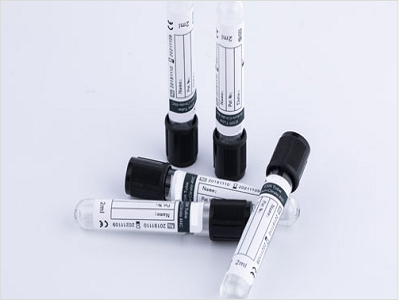The factors that affect ESR are as follows:
1. The rate at which red blood cells sink per unit time, the amount and quality of plasma proteins, and the amount and quality of lipids in plasma. Small molecular proteins such as albumin, lecithin, etc. can slow down, and macromolecular proteins such as fibrinogen, acute phase reaction protein, immunoglobulin, macroglobulin, cholesterol, and triglycerides can accelerate the erythrocyte sedimentation rate.
2 The size and number of red blood cells: the larger the diameter, the faster the erythrocyte sedimentation rate. A decrease in the number increases the ESR, but too little also slows it down. The relatively stable suspension of red blood cells in plasma is due to the friction between red blood cells and plasma that prevents red blood cells from sinking. The double concave disc-shaped red blood cells have a large specific surface area (the ratio of surface area to volume), and the friction generated is relatively large, so the red blood cells sink slowly. Under normal circumstances, the erythrocyte sedimentation rate and the plasma reflux resistance maintain a certain balance. If the number of red blood cells decreases, the total area will decrease, and the plasma reverse resistance will also decrease, so the erythrocyte sedimentation rate will be accelerated. However, if the number is too small, it will affect the aggregation into a money-like shape, so that the acceleration of the erythrocyte sedimentation rate is disproportionate to the degree of red blood cell reduction. Conversely, the erythrocyte sedimentation rate decreases when the number of red blood cells increases. However, the specific surface area of abnormal spherical erythrocytes is relatively small, and the friction generated is relatively small, so the sinking of erythrocytes will accelerate.

3 Whether the globular and sickle-shaped red blood cells are not easily aggregated into the shape of a coin, and the erythrocyte sedimentation rate is slowed down.
4 The concentration of anticoagulants increases, blood coagulation decreases due to fibrinogen, and the erythrocyte sedimentation rate is slowed down!
5 The inner diameter and cleanliness of the erythrocyte sedimentation tube, and whether it is placed vertically. When the erythrocyte sedimentation tube stands vertically, the erythrocyte resists the greatest resistance. When the erythrocyte sedimentation tube is tilted, red blood cells mostly fall along one side, while plasma rises on the other side, resulting in faster erythrocyte sedimentation rate.
6 The indoor temperature is too high to accelerate the erythrocyte sedimentation rate. According to experiments, the inner diameter of the measuring tube at the same inclination affects the erythrocyte sedimentation rate. Within the range of 1.5-3 mm, the smaller the inner diameter, the faster the erythrocyte sedimentation rate, and the larger the inner diameter, the slower the erythrocyte sedimentation rate.
7 When the room temperature is too low, too high, and anemia, the results are affected. Therefore, the erythrocyte sedimentation rate should be measured at room temperature of 18-25 ℃ as much as possible; if the room temperature is too high, the erythrocyte sedimentation rate will be accelerated, which can be corrected by the temperature coefficient, and if the room temperature is too low, the erythrocyte sedimentation rate will be slowed down and cannot be corrected.
Post time: Mar-28-2022





